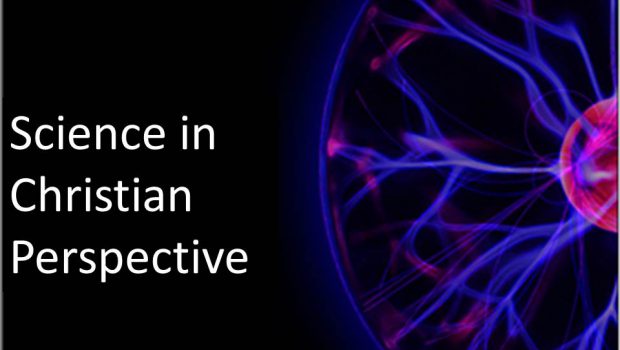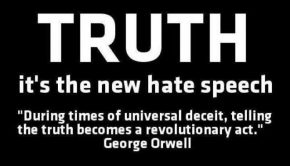Science in Christian Perspective Part 2: Development
In the previous post I addressed certain foundational issues in the relationship of science to religion. Namely, religion can provide a metaphysical foundation for the practice of science. This is in contrast to the popular zeitgeist that pins science against religion like the two are mortal enemies.
To demonstrate the compatibility of science and faith further, I want to examine some of the ways that religion contributed to the rise of modern science. It is an interesting fact that while technologically places like China were often more advanced than Europe, it was Christian Europe alone that gave rise to modern science. To understand why this is the case, we must look at some history. My method here will be to highlight important principles or trajectories that motivated and helped the development of science while using historical examples to demonstrate the broader principle. For those who want a more in depth analysis, I recommend James Hannam’s The Genesis of Science (Washington, DC: Regnery, 2011). All quotations or parenthetical references, unless otherwise noted, come from this book. Without further ado, Science in Christian Perspective Part 2:
Principle 1: Logic Can be Used in Theology
This will take some explaining. After all, what does theology have to do with science? Well, to the Medieval mind, quite a lot. In fact, theology was regarded as the “queen of the sciences.” It was the highest domain of study, to study theology one had to complete courses in all other subjects first (hence why so many Medieval scientists and mathematicians were priests). A theologian had studied science and math, but someone who had studied science and math may not have ever made it to the study of theology. This is also why theologians were regarded as the smartest people at the time, they were the most educated.
At the time of Saint Anselm not everyone agreed that logic should be used in theology. There was a fear that if logic was allowed to influence theology than faith could be ultimately discredited (38). St. Anselm, who famously formed the ontological argument, helped reverse this. There was a heretic named Roscelin who was promoting tri-theism, stating the members of the Trinity were actually three gods (41). Roscelin claimed Anselm supported him, and in the fracas Anselm wrote directly to the Pope to refute Roscelin; the Pope agreed with Anselm and in so doing endorsed the use of logic in theology (42).
Given that theology is the queen of the sciences, if logic could be used here, it is only a small step down for its use in natural philosophy (the precursor of science). Hence, people like Anselm, Lanfranc, and Peter Abelard who raised the status of reason and its use in theology had the effect of promoting the logical and rational study of the natural world as well.
Principle 2: Faith Motivates Discovery
For all the talk we hear about the Church persecuting heliocentricism (the view that the sun is the center of the solar system and is stationary while earth orbits it), we seldom hear about what motivated the great heliocentricists like Copernicus and Kepler. This is because they were motivated by their faith commitments, and that does not play very well into the “science vs. religion” myth so popular in our society.
Copernicus was motivated to find an alternative model to Ptolemy’s geocentric model because Ptolemy’s model seemed poorly designed, or as Hannam (277) notes “too messy to have been designed by God.” Copernicus believed that God would make a universe that fit His character, and an ill-designed one did not. It still took time for these views to gain ground because, in the historical context, the evidence for the geocentric model really did seem better.
This is hard for many of us to grasp, but that’s because we have the benefit of hundreds of years of scientific and technological development. Such developments were not available at the time of Copernicus. Thus, many people wondered “If the earth is moving, why do we not feel rather constant wind from the movement?” Additionally, Aristotle had raised the issue of stellar parallax, and no one had ever addressed this objection to heliocentricism. The idea, as Aristotle saw it, was that if the earth was moving, our position relative to stars would change. But, to the naked eye (which is all Aristotle had) the stars seem to be in the same positions night after night. Thus, Aristotle concluded (and Tycho Brahe agreed) the earth cannot be moving. Of course, in the 19th century we finally had sophisticated enough technology to observe stellar parallax. It turns out this phenomenon is very slight, and without rather advanced telescopes we simply could not observe it. Thus, it’s hard to blame people at the time of Copernicus for using it as an objection to heliocentricism since they did not enjoy the technological advancement we now do.
Kepler, like Copernicus, found essential motivation for science in his faith. At the time of Kepler Hannam notes (295) there was “A rising tide of skepticism” which held the planets could not be mapped out and their movements could not be determined. Kepler did not give in to this skepticism because of his faith, “If the paths of the planets were ordained by God, then they must be simple and elegant” (ibid). Thus, Kepler suggested the elliptical movement of planets and articulated key astronomical laws (ibid., 296).
In short, Kepler’s faith assured him of the knowability of the world, when many others were advocating giving up on trying to map out the solar system. Where would modern science be if Kepler’s faith had not served him here? Perish the thought.
Principle 3: Faith Supports Science
I’ve already talked about how faith “supports” science in terms of giving it metaphysical grounding. But faith “supported” science in an entirely different way, especially as science was getting its early development in natural philosophy. Clerical orders like the Dominicans and Franciscans often paid for the education of its members. As noted above, this included education in natural philosophy as a prerequisite to the study of theology. In fact, some people joined a clerical order because they could not afford an education on their own. Notably in this group is Roger Bacon, who some consider the “father of modern science,” though I’m hesitant to attribute that title to any one individual (136).
The main point is that even as the Church ran cathedral schools, clerical orders provided for the advanced education of their members. These members, which include a scientist of no less stature than Roger Bacon, made very important contributions to science and the development of modern science. Without this financial support of the Church and its orders, the development of modern science would have been stunted.
Conclusion
While the relationship of faith and science is complex, we are at the place where we can banish the simplistic notion of “faith vs. science” or “science vs. religion.” Historically speaking, modern science owes a great debt (literally and figuratively) to faith. Modern science is a rational discipline, and the use of logic in theology advanced the use of logic in natural philosophy. Additionally, faith provided important and necessary motivation to men like Copernicus and Kepler who, because of their faith, would not accept an ill-designed astronomical model nor the rising agnosticism about making a valid model. The Church, through its schools and orders, sponsored the education of many men, including key players in the history of science such as Roger Bacon.
To claim science and religion have always been at odds is grossly historically inaccurate. This claim cannot rationally be maintained in light of the evidence. The person making such a claim is either stupid, ignorant, or dishonest (or a combination of them). Many, however, will still point to instances like the Galileo affair to argue the conflict of faith and science. This, we will see in my next post, is a misrepresentation of the facts.
Soli Deo Gloria,
Josiah










